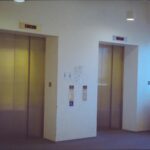When you’re managing a commercial property, elevator reliability isn’t something you think about every day until there’s a problem. One of the worst situations you can face is when the elevator suddenly stops between floors. It’s frustrating, stressful, and can quickly lead to panic if not handled right. Whether it’s employees stuck inside or a client running late for a meeting, the impact is immediate.
Elevators are more than a convenience. They’re essential to how a building functions. So when they stop unexpectedly, things can grind to a halt. Even if the elevator has never caused issues before, one breakdown is enough to disrupt the flow of your day. This kind of situation requires clear thinking, strong communication, and fast professional support. Knowing what to do and what to avoid in those first few minutes makes a big difference.
Immediate Steps to Take
If your building’s elevator stops between floors, there’s no time to waste. It’s easy for people to panic when they’re stuck, so keeping everyone calm is your first priority. Whether you’re the one inside or managing the situation from outside, having a clear plan matters. Here are the top steps to take:
1. Stay calm and help others do the same. Panic spreads quickly. Reassure everyone that help is on the way.
2. Press the emergency button. This alerts building staff or emergency services that there is a problem.
3. Never try to open the doors. Even if you can see the floor just a foot below, climbing out is dangerous and can lead to serious injury or damage.
4. Contact building management or security. If the emergency phone fails, try using your cell phone to get through to someone on-site.
5. Wait for professional help. Encourage passengers to stay seated or lean against the wall if needed. Let them know rescue is coming and to avoid moving around unnecessarily.
Acting too quickly or with the wrong information can make the problem worse. Keeping the event orderly while trained help is on the way is always the safer option.
Communication With Passengers Inside
Clear communication helps everyone stay calm during elevator stops. If you’re inside the cab or speaking to those who are, knowing how to guide the conversation makes the biggest difference.
Use the elevator intercom if possible. Speak in a calm, even tone. Let them know that someone is working to get help and that trained professionals are being dispatched. If the intercom doesn’t work and someone inside has cell service, maintain contact through a phone call or messages. A few short updates go a long way to reduce fear.
Here are helpful tips for communicating clearly with stuck passengers:
- Tell them you’re aware of the problem and that help is on the way.
- Provide reassurance that trained technicians will handle the issue.
- Remind them not to press buttons repeatedly or tamper with any part of the elevator.
- If someone becomes anxious, shift the conversation. Talk slowly and bring focus to simple topics.
- Avoid guessing how long the rescue will take. Be honest and encouraging.
In one actual example, a vendor got stuck in a mid-rise building during a delivery. The site manager kept calm, stayed on the phone with the person, and updated them often. The situation was resolved quickly, with no injuries, damage, or panic.
Silence can create anxiety. Talking things through, even briefly, helps the person inside feel supported and keeps things from escalating.
Contacting Professional Elevator Services
As soon as the incident is reported to building security or management, the next step is calling in expert help. It’s not enough to reset a tripped switch or open doors manually. Only professionals are trained to safely inspect, diagnose, and clear equipment for future use.
When calling a technician, have key details ready. This helps them understand what they’re walking into and speeds up the process once they arrive. Gather the following before making the call:
- Building address, with zip code
- Specific elevator involved (especially if the building has more than one)
- A description of what occurred (elevator stalled, noise heard, repeated issue)
- Whether passengers are still inside
- Location of the stopped cab or last known floor if unknown
Keeping a record of past maintenance and service calls minimizes confusion. These documents are often stored in the control room or with building security. If recent work or trouble has been noted, share that with the technician as well.
Never attempt to fix the elevator while waiting. Even turning off the power could erase fault codes or make it harder for the technician to trace what went wrong. When dealing with electrical, motor, or control board failures, guessing or poking around can add more problems.
Professional elevator support isn’t just a safety requirement. It’s a smart business decision. Elevators in commercial spaces handle a high volume of use and are more complex than residential models. The right help protects your people, your infrastructure, and your day-to-day operations.
Preventive Measures To Avoid Future Elevator Stops
Elevator stops rarely happen without some kind of warning. Most breakdowns show signs in the days or weeks leading up to a full stall. That’s where having a preventive strategy really helps.
Routine inspections performed by trusted professionals uncover small issues before they turn into major disruptions. It’s more than just checking if all the buttons work. Skilled technicians test brake response, emergency alarms, controller software, and battery backups. These hidden systems often fail before anything visible does.
Another important step is training people who use the elevator regularly. Staff, tenants, delivery contractors, and even guests should know what not to do inside the cab. Some habits that lead to trouble include:
- Holding the door open too long
- Overloading the lift with equipment or furniture
- Forcing doors to stay open
- Blocking sensors with carts or bags
A solid maintenance plan might include:
- Quarterly inspections by licensed elevator technicians
- Cleaning door tracks and panel controls to avoid buildup
- Testing software and emergency backup power
- Logs to track casual damage and seasonal adjustments
- System checks after any major weather incidents, especially in winter
Fall is often a smart time to schedule maintenance. Many buildings prepare for higher usage in the coming months, and it helps to address small problems before colder weather causes additional strain on electrical systems.
These simple efforts lead to fewer unexpected stops and extend the life of your elevator. Fewer breakdowns also mean happier tenants, faster operations, and reduced liability.
Keeping Safety a Priority For Everyone
When a commercial elevator suddenly stops in your building, your next steps shape the outcome. Remaining calm, following protocol, and calling the right professionals make all the difference. Even if things feel urgent, safety should always come first.
Experienced technicians understand the whole safety system behind an elevator. It’s not just doors and buttons. They check alarms, backup power, motor control boards, and safety sensors. One piece out of line can impact the entire operation.
Trying to troubleshoot on your own can seem like a quick fix, but it often leads to extra delays and higher costs. In worst cases, it creates risk for everyone involved. Following a professional response path lets you avoid guesswork while restoring elevator service the right way.
Elevators are key to the regular function of your commercial space. Keeping them reliable isn’t luck. It’s the result of informed upkeep, good communication, and a plan for what to do when issues show up.
Keep your building running smoothly with the right support team. At Kaiser Elevators, our trained professionals handle maintenance with care and precision. To keep your equipment operating safely and efficiently, explore our available elevator maintenance service options and give your property the attention it deserves.

